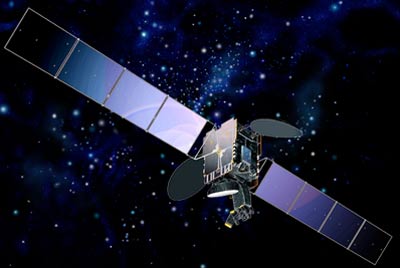
Back to selection
GEO Satellite
AsiaStar (Spectrum-1) GEO
succesfull
Launch date
21 March 2000
Country

Purpose
Broadcasting
Position
105° East
Manufacturer
Launch operator
Launch vehicle
Ariane 5G
Expected lifetime
15 Years

AsiaStar (Spectrum-1) – Geostationary Satellite at 105° East
AsiaStar, later renamed Spectrum-1, was part of the WorldStar satellite series developed by WorldSpace Corporation, a US-based company focused on providing digital audio and multimedia broadcasting services to underserved and emerging regions such as Africa, the Middle East, Asia, Latin America, and the Caribbean.
WorldSpace Satellite System Overview
The WorldSpace satellite system was designed to deliver direct-to-user satellite radio, text, and multimedia services to over 4.6 billion people using a new generation of low-cost portable receivers. The constellation included:
-
AfriStar, launched in 1998
-
AsiaStar, launched in 2000
-
CaribStar (later renamed AmeriStar and eventually AfriStar-2), completed but never launched
-
A planned fourth satellite, WorldStar-4, was partially built but eventually canceled
Satellite Manufacturing and Capabilities
The satellites were based on the Eurostar 2000+ platform developed by Astrium (now part of Airbus), with Alcatel Space (now part of Thales Alenia Space) responsible for the payloads and overall system design. Astrium also provided deployable reflectors and developed the control centers for the operational fleet.
Each WorldSpace satellite was equipped with:
-
Dual payloads: one with onboard baseband processing for direct satellite access by small ground stations, and one with a traditional transparent payload
-
150W L-band traveling wave tube amplifiers (TWTAs) for high power broadcasting
-
Reconfigurable antennas that allowed optimized in-orbit coverage and flexibility
-
Frequency agility for both uplink and downlink channels
These innovations allowed broadcasters to transmit from small local stations directly to entire regions without needing costly ground hubs, making satellite radio more accessible in remote markets.
AsiaStar Operational History
AsiaStar was launched in March 2000 and served similar digital broadcasting roles in the Asia-Pacific region. In 2014, it was acquired by New York Broadband LLC for CMMB Vision and renamed Spectrum-1. It currently holds the orbital slot for the planned Silkwave-1 (NYBBSat-1).
Unlaunched Satellites
The third satellite, AmeriStar (formerly CaribStar), was planned to cover South America, Latin America, and the Caribbean from 95.0° West. However, its L-band frequencies were reserved by the US Air Force, and the satellite was rebranded as AfriStar-2. Despite being completed, AfriStar-2 was never launched due to WorldSpace’s financial difficulties.
GEO Satellite
AsiaStar (Spectrum-1)
succesfull
GEO Satellite
AsiaStar (Spectrum-1)
succesfull